India is a mysterious land that intrigues people from the entire world. Once the richest nation, India has undergone several transitions and it still holds the same values it did centuries back. The beauty of this land precisely lies in its ancient charm and natural mysterious forms. Amongst many of these, the caves in India have always been a centre of attraction. These caves, scattered across the country, reflect the intricate and precise tales of the past through their architecture, murals and carvings. With so many caves spread across India, having a solid itinerary will help you cover them on your upcoming vacations.
9 Caves in India
If you search for the number of caves in India, there is no definite answer because that’s how diverse and uncharted the cave geography is in the country. Here’s a list to make the job easy for you:
1. Ajanta Caves, Maharashtra
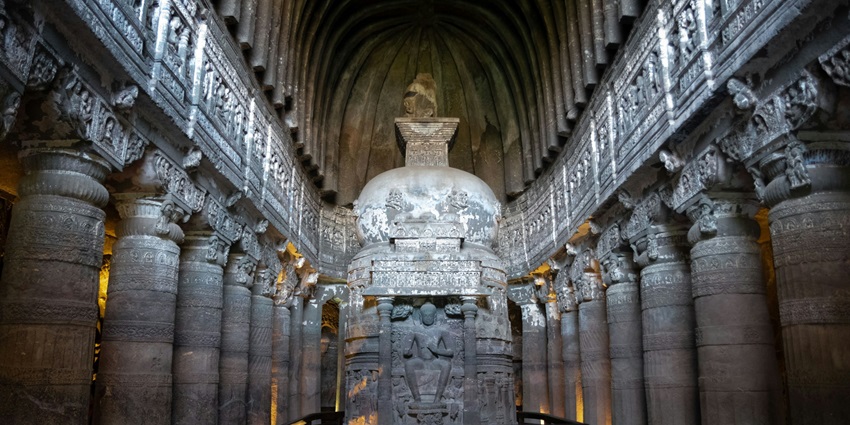
Photo: Siddesh Mangela / Unsplash
When talking about Indian caves, Ajanta Caves in Maharashtra deserves a spot on the top. These caves date back from the 2nd century BCE to about 480 CE. There lies a series of 30 rock-cut Buddhist monuments, murals, frescoes and sculptures inside the caves. Furthermore, the caves are distinguished into two sections – the Hinayana phase and the Mahayana phase. While the Hinayana phase has simpler carvings and paintings, the Mahayana phase has elaborate statues of Lord Buddha, colourful frescoes narrating the Jataka Tales and intricate carvings on the walls.
Location: Maharashtra 431117
Timings: 09:00 AM – 05:00 PM (closed on Mondays)
Entry Fee: ₹40 for Indians.
Suggested Read: The Mysterious Caves In Meghalaya
2. Belum Caves, Andhra Pradesh
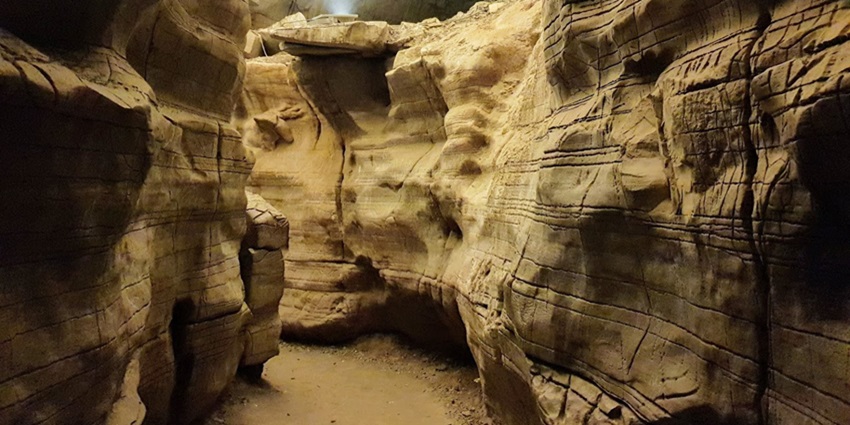
Photo: Daniel Romanson / Wikimedia Common
Up next is the Belum Cave System in Andhra Pradesh. It is located in Nandalya district, more specifically in Rayalaseema. It is the second largest cave system in the Indian subcontinent and is often termed a “spelunker’s paradise”. This naturally formed cave has taken millions of years and formed due to the action of the Kunduru River. These are limestone caves featuring a network of passages and stalactites and stalagmites on the walls. You can consider guided tours for an in-depth exploration of the cave’s insides and its highlights like the “Belum Pillar,” which is the tallest stalagmite tower in the country.
Location: Kolimigundla, Andhra Pradesh 518123
Timings: 10:00 AM – 05:00 PM
Entry Fee: ₹50 per adult.
3. Bhimbetka Caves, Madhya Pradesh
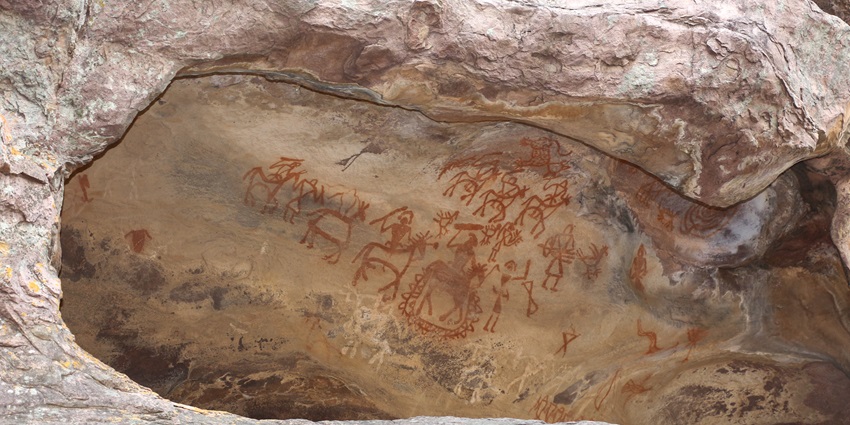
Photo: Bernard Gagnon / Wikimedia Commons
More commonly known as Bhimbetka Rock Shelters, this is another one of the best caves in India. It is a UNESCO World Heritage Site and reportedly depicts some of the earliest traces of human habitation in India. The caves date back to the Paleolithic and Mesolithic periods and house over 750 paintings depicting hunting scenes, rituals, animal figures, and geometric patterns on the cave’s walls. It is located in the Raisen district in Madhya Pradesh. There is a wide range of animal paintings on the inside of the rocks including illustrations of wild oxs, deer, foxes, gaur, stags, elephants and more.
Location: Madhya Pradesh 464990
Timings: 9:00 AM – 5:30 PM (Closed on Mondays)
Entry Fee: ₹10 for Indians
Suggested Read: Places To Visit In Summer In India With Family For A Memorable Vacation
4. Elephanta Caves, Maharashtra
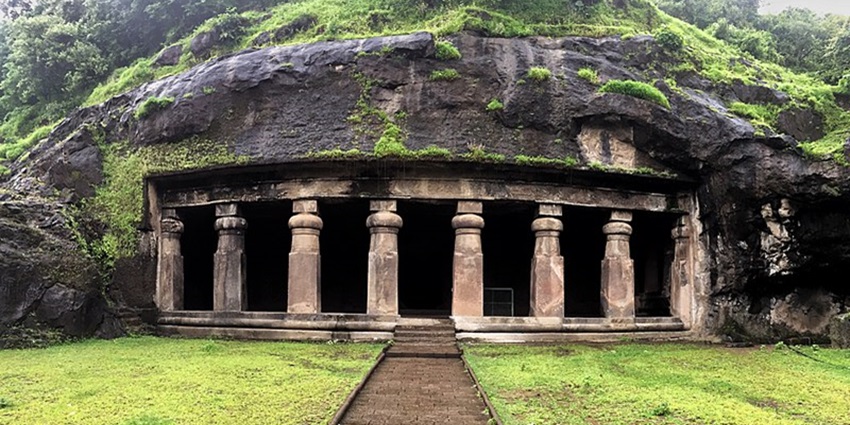
Photo: Athul Shaji / Wikimedia Commons
The Elephanta Caves is another of the most popular caves in India in Maharashtra. It consists of a collection of cave temples, each one of which is dedicated to Lord Shiva. Although not clear, reports suggest that the existence of these caves possibly dates back to the 2nd century BC. The most prominent feature is the colossal three-faced Trimurti sculpture (representing Brahma, Vishnu, and Shiva), a masterpiece of Indian rock-cut art. Beyond the inscriptions, multiple caves and the carvings on the inside of the cave, what stands out in the Elephanta Caves is the amalgamation of the Hindu and Buddhist cultures.
Location: Elephanta Island, Mumbai Harbour, Maharashtra
Timings: 9:00 AM – 5:30 PM (Closed on Mondays)
Entry Fee: ₹40 for Indians; ₹600 for foreign tourists
5. Badami Caves, Karnataka
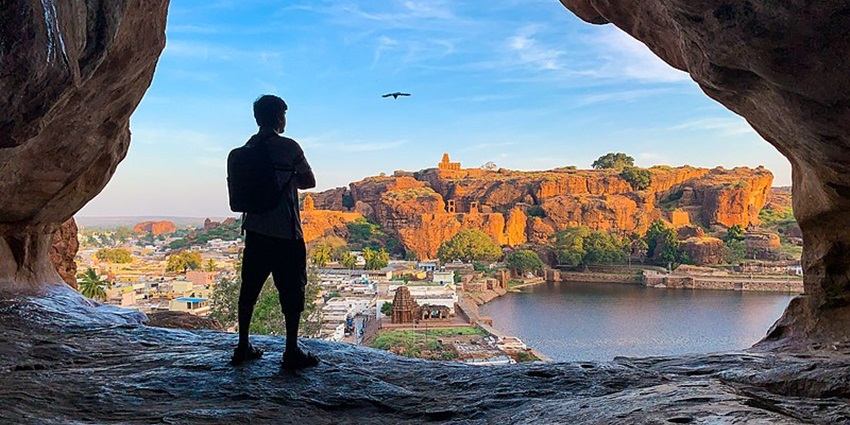
Photo: Jegansomu / Wikimedia Commons
Beyond Karnataka’s scenic splendour and hill stations, these historical sites and caves should be on your travel itinerary. A series of caves in the Badami Caves represent stories from the Buddhist, Jain, and Hindu traditions. Historians claim that these caverns, which are situated in the Karnataka region of Bagalkot, date back to the sixth century. The Deccan plateau’s red sandstone cliffs are home to the caverns, which display the Chalukya dynasty’s superb architecture. The magnificent sculptures depicting Vishnu lounging on Ananta Shesha are a visual delight.
Location: Badami, Karnataka 587201
Timings: 09:00 AM – 05:30 PM
Entry Fee: ₹25 for Indians; ₹500 for Foreign tourists.
Suggested Read: Famous Forts In India To Explore For An Amazing Experience
6. Amarnath Cave, Jammu and Kashmir
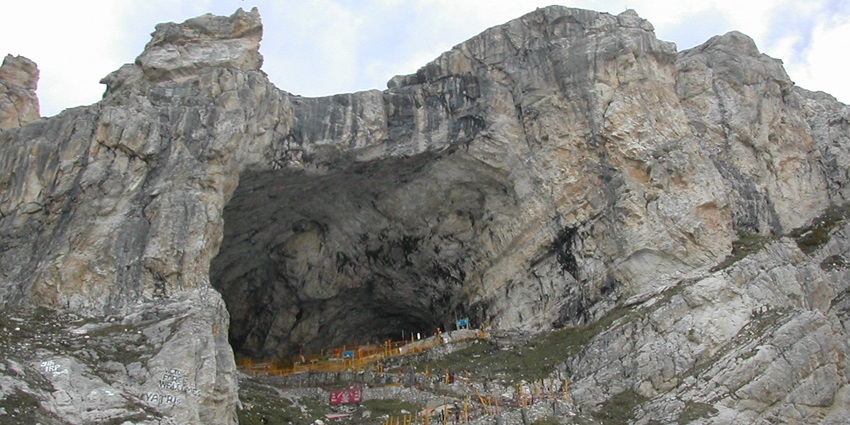
Photo: Gktambe / Wikimedia Commons
The Amarnath Cave temple is a holy cave shrine dedicated to Lord Shiva which is located at an altitude of 3,888 m. The allure and highlights of this cave temple lie in two factors – the natural ice lingam formation that waxes and wanes with the seasons and the trek to reach the top of the cave and inside the temple. Due to its complex location in the Himalayas, the cave is only accessible to tourists for a certain period during the summer months. Besides the main “lingam” of Lord Shiva, there are two surrounding stalagmites, each representing Goddess Parvati and Lord Ganesha.
Location: Pahalgam, Jammu and Kashmir 192230
Timings: Varies depending on the pilgrimage season
Entry Fee: Registration and permit required (costs vary)
7. Udayagiri and Khandagiri Caves, Odisha
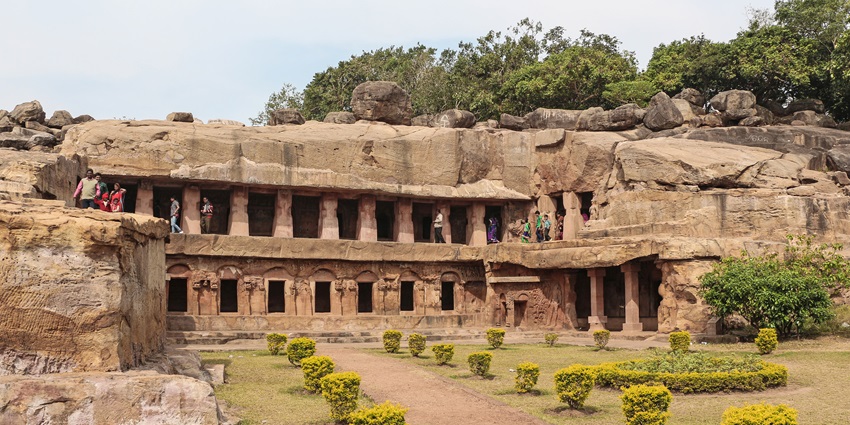
Photo: Bernard Gagnon / Wikimedia Commons
Located in Bhubaneshwar, Odisha, Udayagiri and Khandagiri Caves are among the most iconic historical caves in India. They were carved out in the 2nd century BCE during the reign of King Kharavela. Udaygiri, known as Sunrise Hill, has 18 caves while Khandagiri, known as Broken Hill, has 15 caves. One of the most notable caves inside Udayagiri is the Rani Gumpha (Queen’s Cave), a two-storied monastery. Even the Hathi Gumpha is quite a popular cave to explore. In comparison, Khandagiri has very simple and less intricately inscribed caves but has a heavy influence on Jain culture.
Location: Khandagiri, Bhubaneswar, Odisha 751030
Timings: 08:00 AM – 05:00 PM
Entry Fee: ₹15 for Indians; ₹200 for Foreign tourists
Suggested Read: Best State Museums In India To Plan Your Next Cultural Visit
8. Karla and Bhaja Caves, Maharashtra
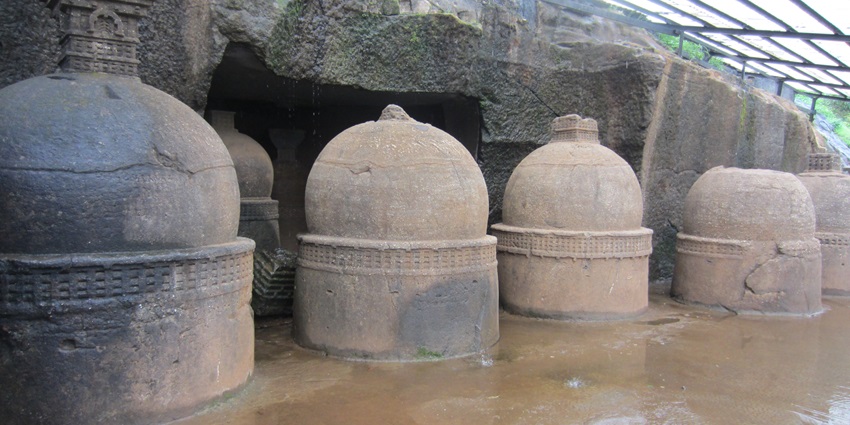
Photo: L Ram Vidhya Sagar / Wikimedia Commons
The Karla and Bhaja Caves, also known as Bhaje Buddhist Caves, are other famous cave systems in India. These are ancient rock-cut caves located in Lonavala in Maharashtra and reportedly date back to the 2nd century BCE. The highlight of the Karla Caves lies in their large and impressive chaitya (prayer hall), which has intricately carved pillars and a central stupa. The Bhaja caves, alternatively, have 22 rock-cut caves with stupas and prayer halls. As you enter the caves, the group of 14 stupas, five inside and nine outside, which are believed to contain relics of Buddhist monks, will blow your mind.
Location: Bhaje Caves Road, District, near Bhaja Village, Maval, Lonavala, Maharashtra 412106
Timings: 09:00 AM – 06:00 PM
Entry Fee: ₹5 for Indians; ₹100 for Foreign tourists
9. Kanheri Caves, Maharashtra

Photo: Sanket Suresh Rane / Wikimedia Commons
Kanheri Caves, located in the Sanjay Gandhi National Park, are another marvel housing a staggering 109 caves. These rock-cut caves and monuments date from the 1st century BCE to the 10th century CE. Back then, Buddhist monks would use this cave to meditate and learn. The most prominent cave is Cave 3, a large chaitya hall with a stupa at one end and intricately carved pillars. The caves also feature rock-cut cisterns and water channels, further depicting the engineering marvels of the past. These caves are truly one of a kind.
Location: Sanjay Gandhi National Park, Mumbai, Maharashtra, India
Timings: 7:30 AM – 5:30 PM (Closed on Mondays)
Entry Fee: ₹15 for Indians; ₹200 for Foreign tourists
Suggested Read: Famous Beaches In India To Help You Take A Dive In Natural Beauty
Each one of the caves in India has a story to tell. It gives us a glimpse into India’s true history and the kind of civilisations we have crossed through. While the caves are a hit among history buffs, even adventure lovers enjoy exploring them. If you are planning a trip to explore the popular caves across the country, get all the planning done with TripXL.
Cover Photo: Ms Sarah Welch / Wikimedia Commons


 WhatsApp
WhatsApp
 Twitter
Twitter









